This silent killer that takes millions of lives leaves fear in the hearts of women and their loved ones once they receive a diagnosis; however the truth remains that breast cancer is not a sure-winner death sentence. Progress in the medical world and various treatment options have made it possible for more women to survive diagnosis and thrive ever after. For those new to the topic, you may find it helpful to understand what breast cancer is before diving into treatment options.
Do you or someone close to you suffer from breast cancer? The experience beforehand may seem daunting, but knowledge is power. Knowing breast cancer treatment options might make it more bearable and enhance your ability to decide on the best course of action. Surgical interventions to highly effective treatments, nothing remains constant with regards to the available options for breast cancer. This integrative treatment guide will describe numerous approaches to breast cancer: traditional ones, new treatments, and sometimes some of the complementary support therapies given to you to help generally during those trying times.
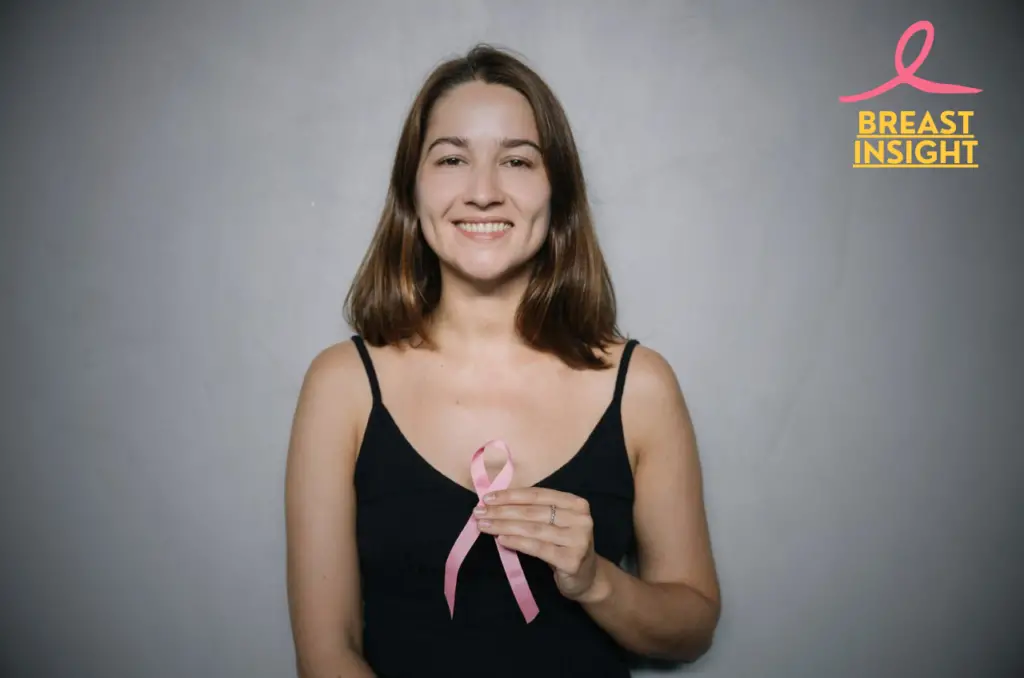
Understanding Breast Cancer
If you’re unfamiliar with cancer itself, exploring what cancer is can give you a foundational understanding of how it develops, spreads, and affects the body.
Types of breast cancer
Breast cancer is not a single disease, but consists of a group of heterogeneous malignancies. The most common are:
- Ductal carcinoma in situ (DCIS)
- Invasive ductal carcinoma (IDC)
- Invasive lobular carcinoma (ILC)
- Inflammatory breast cancer
Each differs by having particular features and courses of treatment. For example, DCIS is non-invasive whereas IDC and ILC can invade adjacent tissues.
Risk factors and causes
Some known risk factors contribute to breast cancer:
- Age
- Genetic mutations (e.g. BRCA1 and BRCA2)
- Family history
- Personal history of breast conditions
- Dense breast tissue
- Lifestyle factors (e.g. alcohol consumption, obesity)
There are several known causes of breast cancer, from genetic mutations to lifestyle factors. Knowing these causes can empower patients to identify and manage modifiable risks while understanding those that are non-modifiable, such as family history and genetic predispositions.
| Modifiable Risk Factors | Non-Modifiable Risk Factors |
| Alcohol consumption | Age |
| Obesity | Genetic mutations |
| Lack of physical activity | Family history |
| Hormone replacement therapy | Dense breast tissue |
Early detection methods
Early detection is critical for effective treatment. Some of these methods are:
- Breast self-exams
- Clinical breast exams
- Mammograms
- Ultrasounds
- MRI (Magnetic Resonance Imaging)
Regular screening is crucial to detect breast cancer early, even before symptoms are apparent. If you’re concerned about early signs, understanding the hidden symptoms of breast cancer can make a huge difference in detecting it in its early, more treatable stages.
Regular screening is necessary
Routine screening will help detect breast cancer early, even before symptoms are apparent. Early stages of the disease ensure better treatment outcomes and survival rates. The American Cancer Society suggests an annual mammogram for women starting at age 45, but they may start these screenings at 40 years old. Women must discuss their risk factors with their providers to make the best determination for their screening schedule.
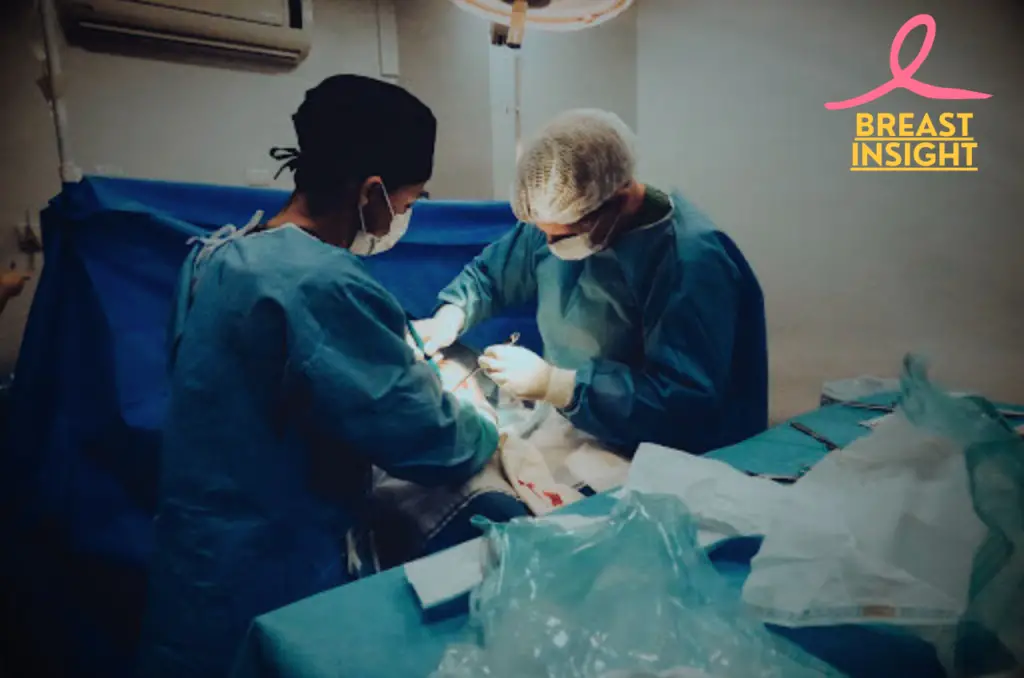
Surgical Interventions
Surgical interventions play a crucial role in breast cancer treatment, offering various options tailored to each patient’s specific condition and preferences.
A. Lumpectomy: Breast-conserving surgery
The procedure effectively removes the cancer, retaining as much breast tissue as possible; it is known as a lumpectomy or breast-conserving surgery. Lumpectomy consists of removing the tumor and a small portion of surrounding healthy tissue.
B. Mastectomy options
More serious cases usually necessitate mastectomy. There are three types of mastectomy:
| Type | Description |
| Simple mastectomy | Removal of entire breast |
| Modified radical mastectomy | Removal of breast and some lymph nodes |
| Skin-sparing mastectomy | Preserves skin for reconstruction |
| Nipple-sparing mastectomy | Preserves nipple and areola |
C. Lymph nodes removal and examination
Lymph node evaluation is crucial for staging and treatment planning. Methods include:
- Sentinel lymph node biopsy
- Axillary Lymph Node Dissection
D. Breast reconstruction possibilities
Options after mastectomy are breast reconstruction.
- Immediate reconstruction (during mastectomy surgery)
- Delayed reconstruction (staged operation)
- Implant-based reconstruction
- Autologous tissue reconstruction (using patient’s own tissue)
Advancements in surgical techniques have made it possible for patients to have more alternatives which will both remove cancer and good aesthetic results. Choice of surgical treatment involves multiple factors, such as stage of cancer, size of the tumor, as well as patient preference. Breast surgeons should always be consulted to establish the best course of surgery.

Radiation Therapy
Now that we’ve dealt with the surgical treatments, let’s see how radiation therapy is another very important component in helping manage breast cancer. Radiation therapy uses high-energy rays to target and destroy cancer cells, reducing the chance of recurrence.
A. External beam radiation
There is a variety of radiation for breast cancer, with the most common being external beam radiation. It includes:
- Directing radiation from outside the body
- Targeting the specific area where cancer was found
- Usually administered 5 days a week for 3-6 weeks
B. Internal radiation (brachytherapy)
Brachytherapy is a more localized form of radiation therapy:
- Direct placement of radioactive seeds or pellets in the breast tissue.
- Usually given over a shorter period, usually 5 days
- Can be administered as a boost following external beam radiation
| Comparison | External Beam Radiation | Internal Radiation (Brachytherapy) |
| Duration | 3-6 weeks | 5 days |
| Delivery | Outside the body | Inside the breast |
| Coverage | Larger area | More localized |
C. Side effects and management
General side effects of radiation therapy are:
- Skin irritation or burning
- Fatigue
- Swelling in the breast
Management tactics:
- Use mild, fragrance-free skin care products.
- Wear loose, comfortable clothing
- Get plenty of rest and maintain a healthy diet
D. Treatment duration and frequency
The period and also the frequency of radiation may depend:
- Standard external beam radiation: 5 days a week for 3-6 weeks
- Hypofractionated radiation: Larger daily doses over 3-4 weeks
- Brachytherapy: Twice-daily treatments for 5 days.
It continues to follow chemotherapy, another very important treatment of breast cancer.
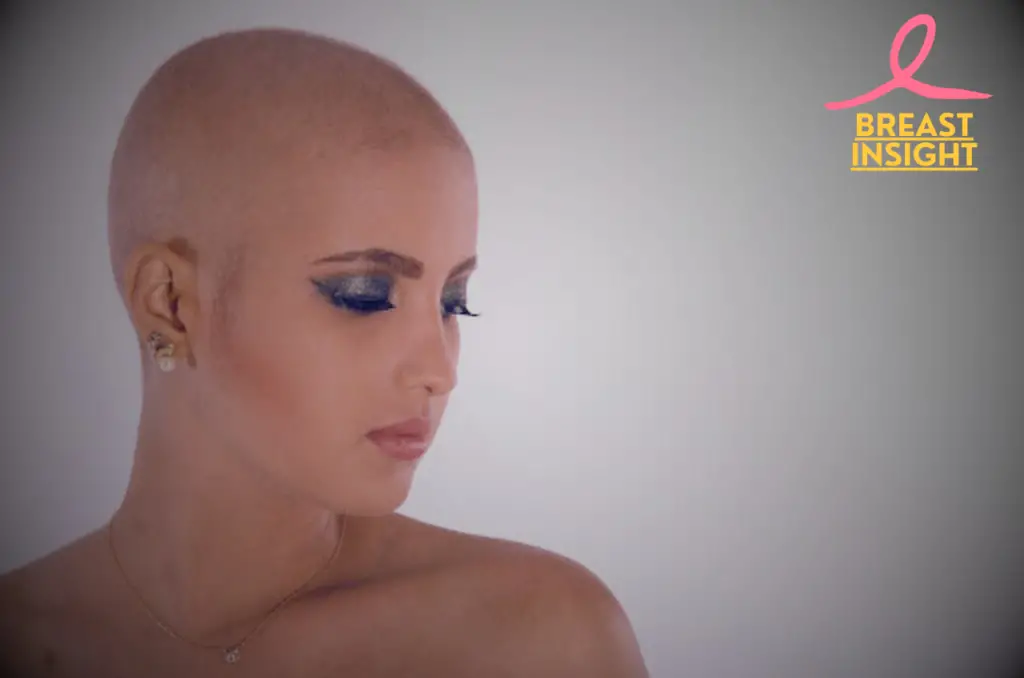
Chemotherapy
Chemotherapy is also one of the most important treatments for breast cancer, usually involved in combination therapy. It works by disrupting rapidly dividing cells within the body, including cancer cells.
A. Classification of chemotherapy drugs
There are, therefore many chemotherapy drugs used for breast cancers, including:
- Anthracyclines (e.g., doxorubicin, epirubicin)
- Taxanes (e.g., paclitaxel, docetaxel)
- Alkylating agents (e.g., cyclophosphamide)
- Antimetabolites (e.g., 5-fluorouracil, methotrexate)
| Drug Class | Examples | Common Side Effects |
| Anthracyclines | Doxorubicin, Epirubicin | Heart damage, hair loss |
| Taxanes | Paclitaxel, Docetaxel | Neuropathy, bone marrow suppression |
| Alkylating agents | Cyclophosphamide | Nausea, fertility issues |
| Antimetabolites | 5-fluorouracil, Methotrexate | Mouth sores, diarrhea |
Explore more about chemotherapy for breast cancer, including the different types of drugs and how they work to target cancer cells.
B. Administrative processes
Chemotherapy is delivered through several methods:
- Intravenous IV infusion
- Oral medications
- Intramuscular injections
- Subcutaneous injections
C. Managing side effects
Common side effects of chemotherapy include:
- Fatigue
- Nausea and vomiting
- Hair loss
- Decreased blood cell counts
They do indeed closely collaborate with patients and these effects are addressed by medications, lifestyle modifications, and supportive care.
D. Neoadjuvant vs. adjuvant chemotherapy
Chemotherapy timing can significantly impact treatment outcomes:
- Neoadjuvant chemotherapy:administered prior to surgery to reduce tumor size
- Adjuvant chemotherapy: Administered after surgery to eliminate remaining cancer cells
The approach taken would depend on the stage of cancer, the size of the tumor, and several other personal factors. In proceeding to target therapies, we’ll now discover how such treatments enhance traditional chemotherapeutics in breast cancer management.
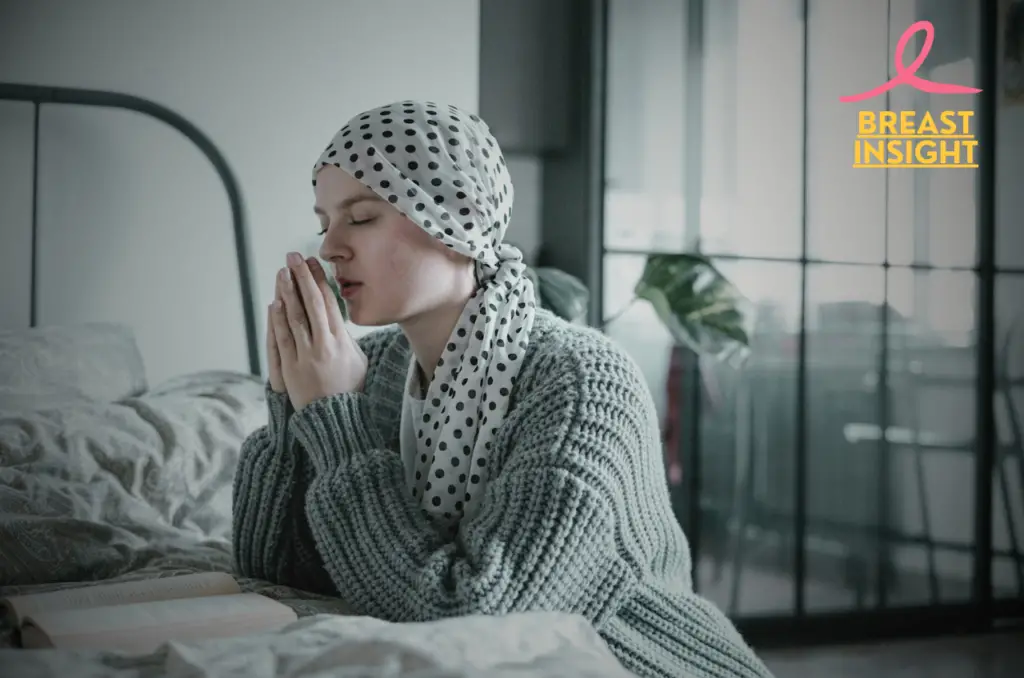
Targeted Therapies
Targeted therapies have fundamentally changed the approach to breast cancer treatment by focusing on the particular molecular properties of the cells. Targeted therapies are more precise and meaningful as treatments with fewer side effects than those of old chemotherapy.
A. HER2-positive breast cancer treatments
HER2-positive breast cancers primarily result from excessive production of the HER2 protein. Targeting this subtype:
- Trastuzumab (Herceptin)
- Pertuzumab (Perjeta)
- T-DM1 (Kadcyla)
These drugs specifically target HER2 proteins, inhibiting cancer cell growth and improving survival rates.
B. Hormone receptor-positive treatments
For hormone receptor-positive breast cancers, targeted therapies include
- CDK4/6 inhibitors (e.g., palbociclib, ribociclib)
- mTOR inhibitors (e.g., everolimus)
These treatments work in addition to hormone therapy to more potently react and overcome resistance.
C. PARP inhibitors for BRCA mutations
PARP inhibitors, such as olaparib and talazoparib, function well for patients with BRCA1 or BRCA2 mutations. They capitalise on the DNA repair deficiency in these cancer cells, resulting in their elimination.
D. Emerging targeted therapies
Research is ongoing to develop new targeted therapies, including:
- PI3K inhibitors
- AKT Inhibitors
- FGFR inhibitors
| Therapy Type | Target | Examples |
| HER2-targeted | HER2 protein | Trastuzumab, Pertuzumab |
| CDK4/6 inhibitors | Cell cycle proteins | Palbociclib, Ribociclib |
| PARP inhibitors | DNA repair mechanism | Olaparib, Talazoparib |
Of course, the bottom line on these targeted therapies is that much of their efficacy will ultimately depend on the patient’s specific cancer genetic profile. That aspect fundamentally validates the need for rigorous tests to guide planning.

Hormone Therapy
Hormone therapy comprises the most important drugs for the treatment of breast cancer, especially when there is a positive hormonal receptor. Endocrine therapy basically reduces the work of hormones such as estrogen and progesterone during the development of cancer.
A. Tamoxifen and its benefits
Tamoxifen is one of the well established hormone therapies that have been used for several years, first being known in cutting off the required hormones to cancer cells by blocking estrogen receptors within breast tissues. The benefits associated with tamoxifen are as follows:
- Risk reduction of cancer relapse
- Prevention of new breast cancers
- Works well on both pre-and post-menopausal females.
B. Aromatase Inhibitors
AIs are another class of hormone therapy drugs, primarily used in post-menopausal women. They act through:
- Blocking the enzyme aromatase
- Low Estrogen Production in Body Tissues
| Aromatase Inhibitor | Common Brand Names |
| Anastrozole | Arimidex |
| Letrozole | Femara |
| Exemestane | Aromasin |
C. Ovarian inhibition techniques
For premenopausal patients, ovarian suppression is commonly required to decrease estrogen production. This is usually achieved by
- Drugs (such as gonadotropin-releasing hormone agonists)
- Oophorectomy: Surgical removal of the ovaries
D. Duration of hormone therapy
The length of hormone therapy is different for each patient but it is normally;
- 5-10 years for tamoxifen
- 5-10 years for Aromatase Inhibitors
- Some patients may benefit from extended therapy
Learn more about hormone therapy for breast cancer and discover how Tamoxifen and Aromatase Inhibitors work to reduce cancer risks in different groups. This long-term treatment decision requires discussing its side effects and benefits with your oncologist. Following this, we will discuss the role of immunotherapy in the treatment of breast cancer.
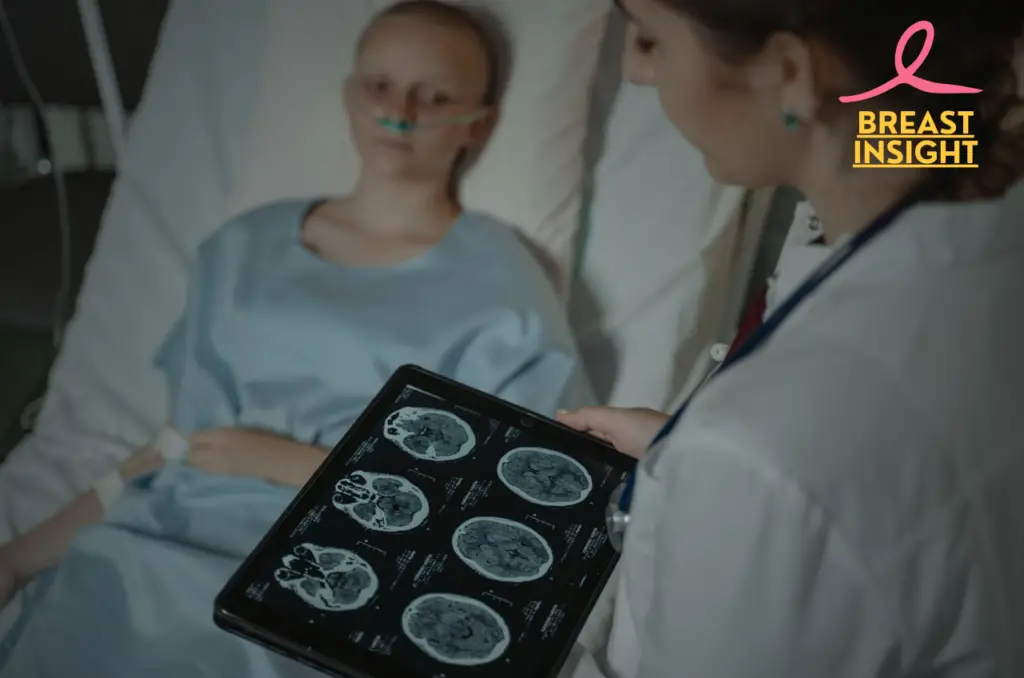
Immunotherapy
This has been the latest scenario because immune therapy takes a new approach by aiding the body’s immunity to fight cancer cells. This is a new promising approach in breast cancer treatment and brings hope to patients; particularly, patients with advances or chemo-resistance breast cancer.
A. Checkpoint inhibitors
Checkpoint inhibitors are immunotherapy drugs that work by blocking proteins that stop T cells from attacking cancer cells. The drugs have clearly indicated much promise in the treatment of triple-negative breast cancer, one of the most aggressive forms of the disease.
| Checkpoint Inhibitor | Target Protein | Approved for Breast Cancer |
| Atezolizumab | PD-L1 | Yes |
| Pembrolizumab | PD-1 | Yes |
| Durvalumab | PD-L1 | Under investigation |
B. Cancer vaccines
Cancer vaccines stimulate the immune system to recognize and attack specific cancer cells. Although still largely experimental with their use in breast cancer, several vaccines are being studied in clinical trials:
- HER2-targeted vaccines
- Tumor cell vaccines
- Antigen-specific vaccines
C. Combination approaches
Researchers are working on combinations of immunotherapy with other treatment modalities to maximize effectiveness:
- Immunotherapy + chemotherapy
- Immunotherapy + targeted therapy
- Dual Checkpoint inhibition
D. Ongoing Clinical Studies
Several clinical studies are in progress to determine some new immunotherapy approaches for breast cancer. Some of them include:
- Confirming biomarkers for patient selection
- Optimize dosing and timing of treatments
- New immunotherapy drugs
As research progresses, immunotherapy continues to show promise in revolutionizing breast cancer treatment, offering new options for patients and potentially improving outcomes.
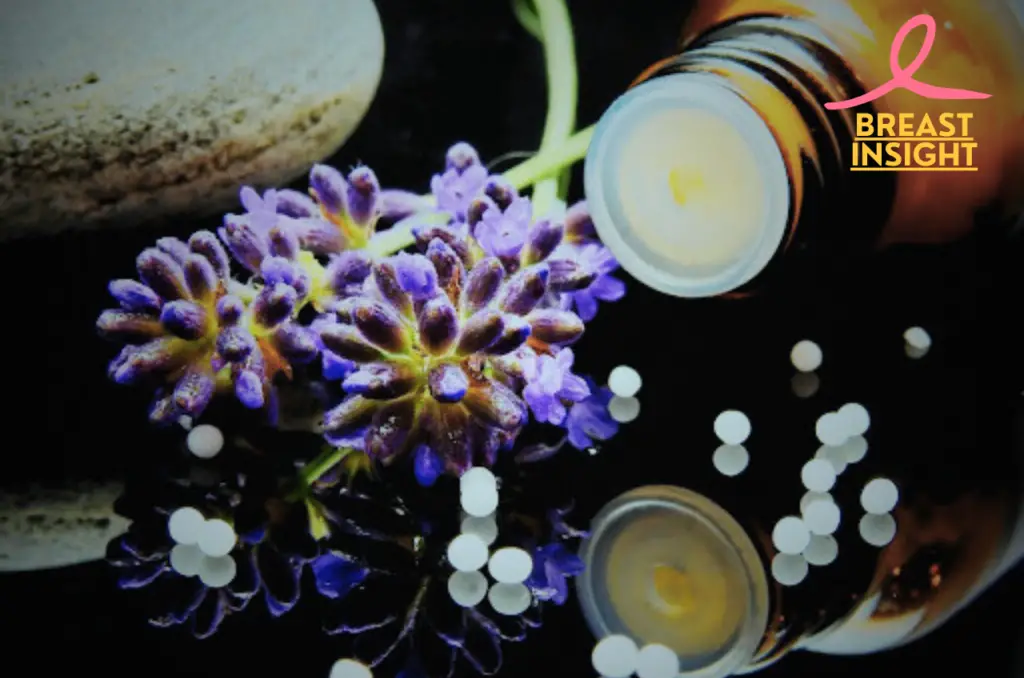
Alternative and Complementary Therapies
However, while conventional treatments form the backbone of breast cancer therapy, many patients seek out complementary and alternative treatments as part of symptom management and overall wellness. Such treatments can be used concurrently with standard medical care but must always be discussed with your oncologist.
A. Dietary changes and supplements
A well-balanced diet is one essential during cancer therapy because some patients benefit from:
- Increased fruit and vegetable intake
- Lowering processed foods and sugars
- Add omega-3 fatty acids
| Supplement | Potential Benefit |
| Vitamin D | May support bone health |
| Green tea | Contains antioxidants |
| Turmeric | May have anti-inflammatory properties |
B. Mind-body techniques
These practices can help manage stress and improve quality of life:
- Meditation
- Yoga
- Tai Chi
- Deep breathing exercises
C. Acupuncture and Massage Therapy
Acupuncture may help alleviate treatment side effects like nausea and pain. Massage therapy can reduce stress and improve sleep quality.
D. Herbal Medications
Some herbal remedies show promise, but caution is essential:
- Ginger for nausea
- Valerian root for sleep disorders
- Milk thistle for liver support
It is important to note that these adjunctive treatments, though useful, will not replace conventional treatments. Always consult your healthcare team before implementing any complementary therapies on your treatment regimen. We now shall discuss survivorship and follow-up care, which are also important aspects in this breast cancer journey.
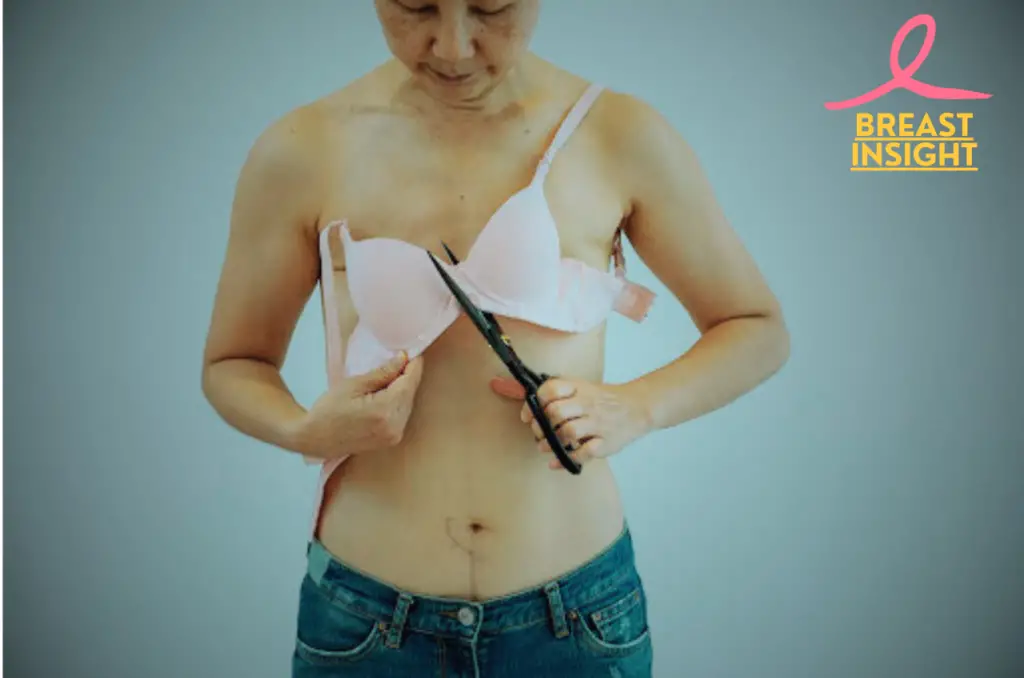
Survivorship and Follow-up Care
A. Long-term side effect management
A tremendous milestone in surviving breast cancer, but most often than not accompanies long-term side effects requiring management. These side effects include: lymphedema, fatigue, as well as cognitive change. In managing these challenges:.
- See a lymphedema specialist to learn appropriate self-management techniques
- Use regular exercise to counteract fatigue and bring about general wellness.
- Consider cognitive rehabilitation programs for “chemo brain” symptoms
B. Emotional and psychological support
This emotional impact of breast cancer may continue long after the treatment is completed. Survivors may well experience anxiety, depression, or fear of recurrence. Available support options include:
| Support Type | Benefits |
| Individual counseling | Personalized strategies for coping |
| Support groups | Shared experiences and peer support |
| Mindfulness practices | Stress reduction and emotional regulation |
C. Lifestyle modifications for prevention
Adopting healthy lifestyle habits can reduce the risk of recurrence and improve overall health:
- Maintain a balanced diet rich in fruits, vegetables, and whole grains
- Involvement in moderate-intensity aerobic physical activity for at least 150 minutes a week.
- Limit alcohol consumption and give up smoking
- Reduce tension through relaxation and self-caring activities
D. Routine follow-up visits, evaluations, and tests
Repeat follow-up for surveillance for earlier detection of possible recurrence or new cancers Ongoing, regular follow-up can be planned for
- Annual mammograms and clinical breast exams
- Regular follow-up to your oncologist
- Bone density scans in people who had hormone therapy
- Blood tests can determine the overall well-being and possible markers of recurrence.
Taking a proactive approach to follow-through and care and healthy lifestyle maximizes long-term survival well-being as a survivor of breast cancer. Every survivor’s survivorship is unique, so it is essential to work with your healthcare team to develop a personalized plan.

Conclusion
Breast cancer treatment has greatly evolved and is now able to provide patients with a variety of options to fight this perhaps challenging disease. Besides surgery, it has now advanced to new therapies such as immunotherapy. Each aspect of treatment be it radiation, chemotherapy or targeted therapies becomes vital in patient treatment towards recovery.
As you have learned healing after treatment is not just medicine but survivorship and follow-up care are also important components in maintaining health and well-being for a long time. Remember every patient is different, and with close collaboration with healthcare professionals, every individual can determine the best treatment plan. Staying informed and proactive, patients can seek breast cancer treatment with confidence in hopes of looking forward to a brighter and healthier future.
Frequently Asked Questions (FAQs)
What are the standard treatment options for breast cancer?
The usual treatment methods involved are surgery, such as lumpectomy or mastectomy; radiation therapy; chemotherapy; hormonal therapy; and targeted therapy. The choice of treatment is considered according to several factors or characteristics of the individual’s particular breast cancer. For concrete recommendations, you may refer to an oncologist who specializes in providing the best treatment protocol according to your condition.
How effective is chemotherapy for breast cancer?
Chemotherapy is very effective for most breast cancer patients, mainly for those suffering aggressive forms of the disease. Chemotherapy works through rapidly reproducing cancerous cells, which limits the size of the tumors before surgery or destroys the remaining cancerous cells following it. The response varies with cancer subtype, stage, and drug used. This all requires really detailed communication with your health care provider as to what you can expect and what negative effects might arise.
What is the role of clinical trials in breast cancer treatment?
Clinical trials greatly serve in the developmental stages of potential treatments for breast cancer. Researchers will have the opportunity to test new therapies and compare them with active treatments. For some patients, participation in a clinical trial might even give them access to the newest therapies much earlier than they are broadly distributed. Patients can look for clinical trials either through a physician or databases such as ClinicalTrials.gov.
Are there any side effects of hormonal therapy for breast cancer?
Hormonal therapy is the most frequently prescribed treatment for hormone receptor-positive breast cancer, but has other side effects- including hot flashes, mood swings, more than usual fatigue, and even a higher risk of blood clots. The type of hormonal therapy used (Tamoxifen or aromatase inhibitors) will change the side effects faced. Side effects should be talked about with the health care provider in order to better manage throughout the treatment.

